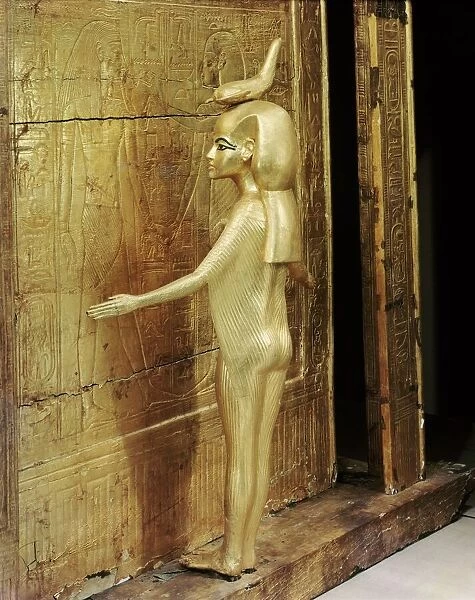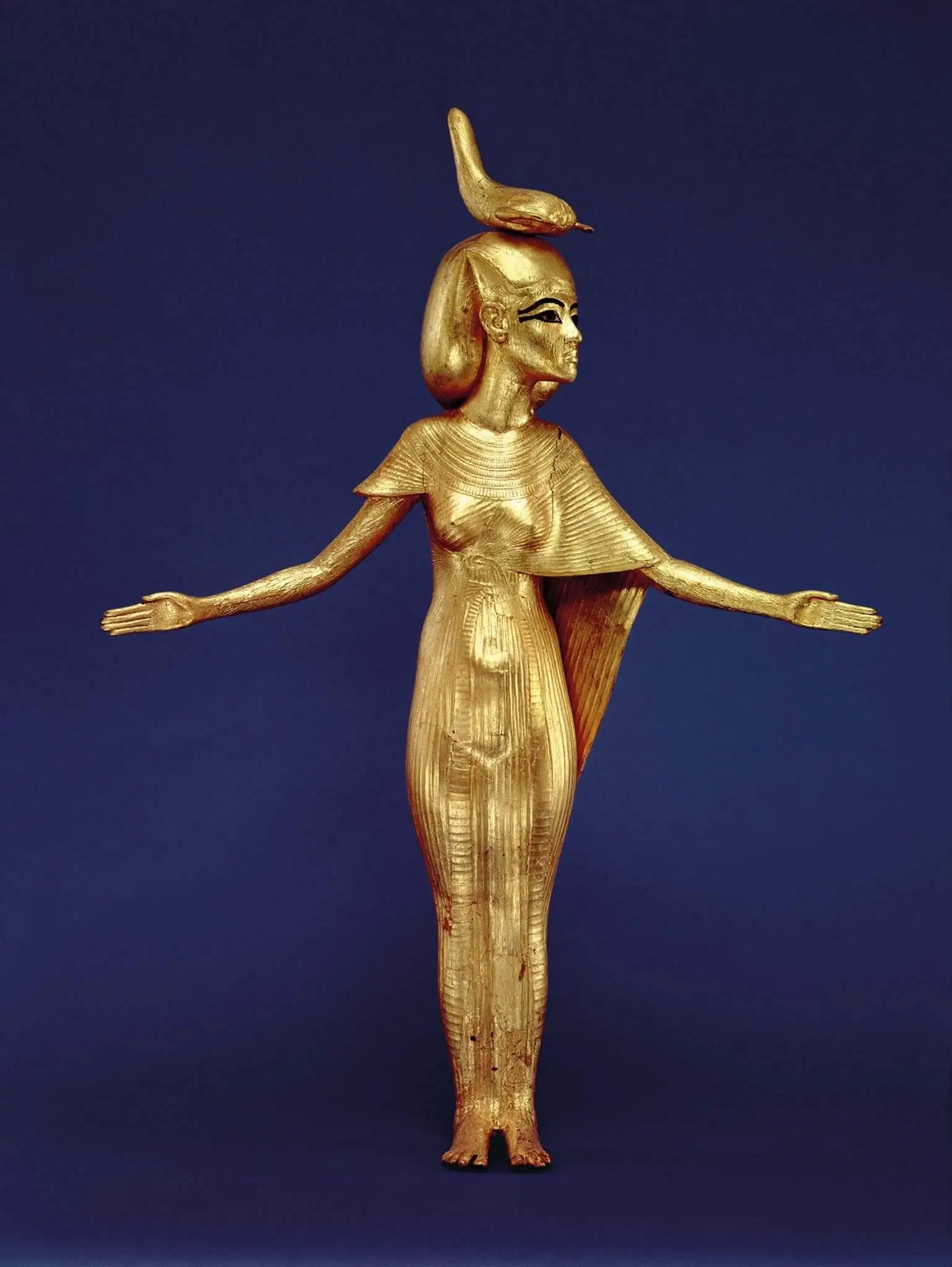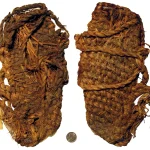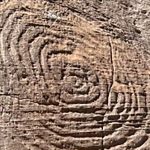Golden Serket Statue from Tutankhamun’s Shrine.

In the intricate tapestry of ancient Egyptian artistry, few artifacts rival the exquisite beauty and profound symbolism of the gilded statue depicting the goddess Serket. This remarkable piece, discovered within the Canopic shrine of Tutankhamun, offers a mesmerizing glimpse into the religious beliefs and cultural practices of one of history’s most fascinating civilizations.

Serket, also known as Selket or Selcis, was a deity revered in ancient Egyptian mythology as the goddess of scorpions, medicine, and healing. Often depicted as a woman with a scorpion on her head or as a scorpion itself, she held a significant place in the pantheon of gods and goddesses, wielding power over both life and death.

As we focus our attention on this gilded statue, we are immediately struck by its exquisite craftsmanship and attention to detail. Serket is depicted with graceful elegance, her form adorned with intricate jewelry and regal attire befitting her divine status. The gilding, a technique of applying a thin layer of gold leaf or gold powder, adds a luminous quality to the statue, enhancing its celestial aura.
One cannot help but marvel at the symbolism embedded within this artwork. Serket’s association with scorpions, creatures both feared and revered in ancient Egypt, speaks to her role as a protector and guardian against venomous creatures and the perils of the underworld. As a goddess of medicine and healing, she was also invoked in rituals and prayers seeking relief from illness and suffering, offering solace and hope to the afflicted.

The significance of this statue within Tutankhamun’s Canopic shrine cannot be overstated. Canopic jars, used in the mummification process to store the internal organs of the deceased, were often placed within ornate shrines dedicated to the protection and guidance of the deceased in the afterlife. Serket’s presence in this sacred space would have been integral to ensuring the safe passage of Tutankhamun’s soul into the realm of the gods.
Beyond its religious and ceremonial functions, the gilded statue of Serket serves as a testament to the artistic prowess of ancient Egyptian craftsmen. The meticulous attention to detail, the mastery of materials, and the reverence with which it was created speak volumes about the cultural and spiritual significance attributed to such objects in ancient Egypt.

As we reflect on the legacy of Tutankhamun and the civilization he represents, artifacts like the gilded statue of Serket offer us a tangible connection to the past. They remind us of the ingenuity, creativity, and spiritual depth of a civilization that flourished millennia ago, leaving an indelible mark on human history.
In conclusion, the close-up view of the gilded statue depicting the goddess Serket from Tutankhamun’s Canopic shrine is not merely an artwork but a window into a world steeped in mythology, ritual, and reverence. Its beauty, symbolism, and historical significance invite us to delve deeper into the mysteries of ancient Egypt, unlocking secrets that continue to captivate and inspire us to this day.










